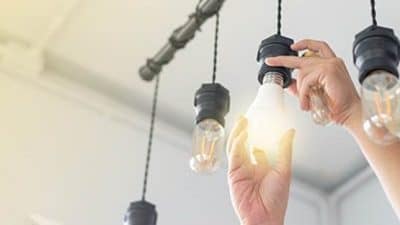
October was National Energy Awareness Month. Is your New Year’s resolution to make your life more energy-efficient?
Twenty-two percent of U.S. electricity generation is expected to come from renewable resources in 2022.
WalletHub released its report on 2022’s Most & Least Energy-Efficient States.
The average American household spends at least $2,000 per year on utilities and another $2,148 on motor fuel and oil, according to WalletHub.
The personal finance website compared the auto- and home-energy efficiency in 48 states to determine the financial impact of doing more with less energy. Data limitations prevented the inclusion of Alaska and Hawaii in this report.
Massachusetts is the most energy-efficient state, according to WalletHub’s report. New York, Rhode Island, Utah and Vermont complete the top five of energy-efficient states.
The least energy-efficient states in America are South Carolina, Alabama, West Virginia, Arkansas and Mississippi.
Experts offered opinion on energy-efficient products that offer the best ROI in homes.
“Smart thermostats like the Nest or Ecobee. Replacing incandescent and CFL light bulbs with LED bulbs,” Dr. Auriane Koster, Senior Sustainability Manager at Fusebox (powered by Pierce Energy Planning), said in a press release. “Power strips that allow you to reduce vampire/phantom energy without having to physically unplug everything. Energy-efficient, dual-paned windows. Efficient HVAC. Energy-efficient appliances like refrigerators, washers, dryers, microwaves, dishwashers and water heaters.”
According to Heather E. Payne, associate professor at Seton Hall University, energy-efficiency depends on different factors, such as the age and condition of the home, improvements already made and the climate where the home was built.
“There is also a range of ease in terms of implementation of energy efficient products. Everyone, for example, should switch out their lightbulbs to LEDs – that is easy to do. Other energy efficiency improvements, like replacing single-pane windows or adding exterior wall insulation, are both more expensive and much more disruptive/harder to do. The good news is that some utilities or municipalities offer low- or no-cost home energy assessments, which can give homeowners a good idea of the potential range of energy efficiency improvements they could make, although those services do not typically price out the improvements or the potential ROI,” Payne said in the press release.
Should the government continue to incentivize consumers and businesses to invest in energy-efficient projects?
“I do not think the federal or state governments should subsidize energy projects or products,” Dr. Dan Ervin, a professor at Salisbury University, said in the press release. “The subsidizes lead to price distortions and market inefficiencies. Energy is the foundation of our economy and necessary condition for our standard of living. Subsidizing projects or products will lead to suboptimal outcomes.”
Koster said the government absolutely should.
“Incentives provide access to those that may not necessarily be able to afford energy-efficient projects otherwise. It also allows people to do more and more things in their homes to increase energy efficiency. It also gives people ideas of what they can do to be energy efficient,” Koster said.
Experts also offered tips on building an energy-efficient home on a budget.
“Insulation and making the building tight are most important, as that is what is going to lead to lower monthly bills going forward. Electrify everything. Thermal barriers are included on the roof, so there is not a pathway through the wood to let heat escape…Minimize open holes to the outside…Maintenance is also important-make sure the caulk around windows and doors doesn’t have holes, the weatherstripping is still tight, etc. With all of these, the best thing people can do is start being cognizant of their energy use, and then determine what the best way is to reduce that use – whether it is by installing energy efficient appliances like a heat pump water heater or space heater, making their home more airtight with caulking and weather stripping, or taking on larger projects like insulation,” Payne said.
Koster said that anything that can be done in the beginning to make it easier for the home to be energy efficient will save money in the long term.
“It is always easier and cheaper to be energy efficient from the start versus having to do retrofits and updates. Install energy-efficient, dual-paned windows. Install a smart thermostat and ensure that it is programmed to increase the temperature (when cooling) and decrease the temperature (when heating) when you are away. Install a tankless water heater. If possible, have the home face north-south. Install energy-efficient appliances like a refrigerator, washer, dryer, microwave and dishwasher,” Koster said.










